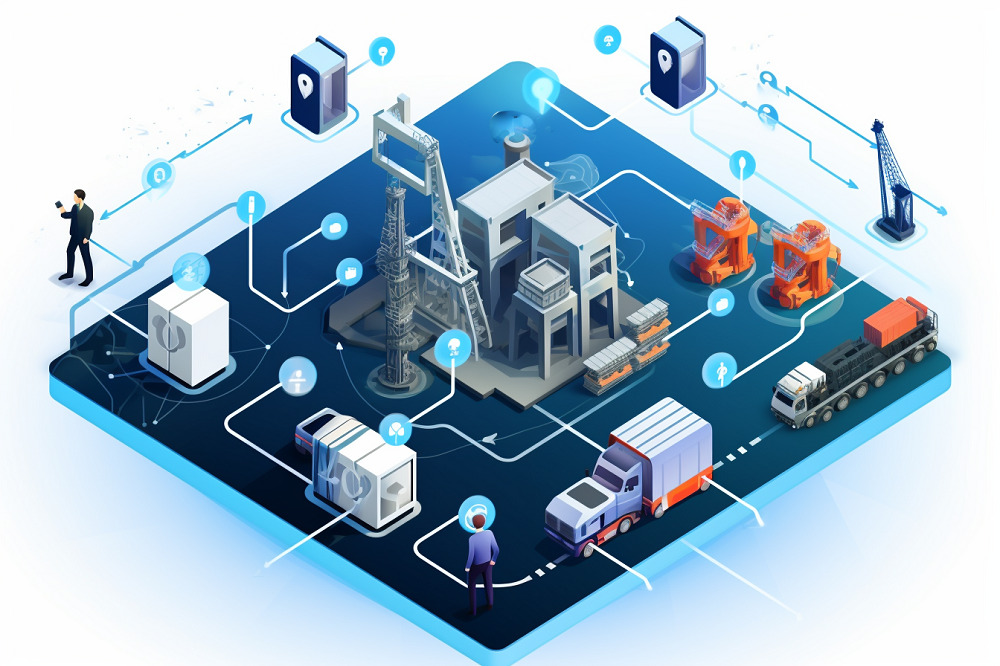Businesses can reap many benefits from blockchain technology, which offers decentralization, immutability, transparency, and automation to bear on an initiative. Yet, businesses that want to use blockchain technology struggle with the high cost of developing and maintaining blockchain applications.
Hence, projects such as VeChain aim to eliminate these obstacles. Blockchain technology allows for direct transactions and data sharing among stakeholders in the supply chain industry, solving the problem of supply chain transparency. This promotes coordination between logistics and financial service providers.
VeChain Explained
VeChainThor, a public blockchain, is working to make blockchain technology accessible to businesses of all sizes. VeChain argues that Ethereum doesn’t have a governance framework, making it unsuitable for large-scale commercial DApps; thus, it can’t respond quickly enough to new problems or innovations.
Another issue is that enterprises need help managing the costs of DApp operations on Ethereum due to the model’s economics. Accordingly, VeChain uses meta-transaction capabilities, an on-chain governance mechanism, a proof-of-authority consensus approach, and an innovative two-token system to solve this issue.
Features of VeChain Meta Transactions
VeChain’s meta-transaction features facilitate corporate development in many ways.
Multi-party payment: Enterprises may easily enroll customers with a freemium model. VeChain’s protocol enables smart contracts and allocated petrol accounts to handle network costs.
Controllable transaction lifecycle: Using the Expiration and BlockRef transaction domains, users can control transaction execution timing or expiration if not included in a block.
Multi-task transaction: Creators can simplify operations by combining payments and many calls to different contract functions into a single transaction. They also maintain control over the order of these calls via multi-function atomic transactions.
Transaction dependency: Users can specify dependencies to ensure that transactions wait until the appropriate ones are executed. This feature guarantees that execution orders are consistent with business requirements.
VeChain’s PoA Consensus Mechanism
VeChain’s PoA consensus mechanism progressed from PoA 1.0 to PoA 2.0. PoA 1.0 debuted with VeChainThor in 2018 and used Authority Masternodes to validate blocks. While efficient and environmentally friendly, it faced scalability and cost limitations.
The introduction of PoA 2.0 in 2022 was a significant improvement—this improved version prioritized scalability, security, and data finality, overcoming the constraints of PoA 1.0. VeChain’s commitment to continual technological innovation is seen in the improvements to its consensus method.
VeChain Governance
The Steering Committee, selected by stakeholders, oversees VeChain Improvement Proposals (VIPs). This setup reduces ambiguity in organizational and technical developments through role-based voting.
Furthermore, VeChain’s concept promotes community engagement by allowing tokenholders to vote, enabling greater participation in critical governance decisions.
VeChain’s Dual Token Economy
Two tokens, VeChain Token (VET) and VeChainThor Energy (VTHO), power the VeChain ecosystem. VET is the principal token for value transfer; it acts as “smart money” for shareholder voting, investments, and transactions. Conversely, VTHO is the “gas” that powers the VeChainThor blockchain and all its smart contracts and transactions.
VTHO decouples the costs of blockchain usage from the market price of VET. This decoupling process makes transaction costs stable, and the ecosystem’s resource distribution is streamlined, leading to efficiency.
How The VeChain Ecosystem Works
Data Capture And Recording
Records are kept for every step of the supply journey, such as production data, batch numbers, expiration period, storage needs, and transit details. Afterwards, the VeChain blockchain is used to store this extensive data safely.
Smart Contract Activation
Smart contracts activate automatically when blockchain requirements are met. This capability may initiate payments, warn stakeholders of product arrival at specific destinations, or autonomously update product statuses in supply chains.
Unique Identity Creation
Every product or batch is assigned a unique identification number, aided by near-field communication (NFC) chips, quick response (QR) codes, or radio-frequency identification (RFID) tags. This unique identification is crucial for tracking the product’s travel through the supply chain.
Real-time Tracking
Supply chain stakeholders, customers, distributors, manufacturers, suppliers, and retailers can be tracked and verified in real-time. They may corroborate the product’s history and details on the blockchain, providing transparency and reliability.
Frequent Updates and Audits
VeChain’s supply chain management relies on KYC to authenticate enterprises and stakeholders, protecting the network from illegal entities. Smart contracts automate crucial procedures like delivery and payment verification, guaranteeing secure, intermediary-free transactions.
What’s Next For VeChain?
VeChain’s influence extends to many sectors, including supply chain management, logistics, and more, and it helps companies improve their operations. No project has a clear future, and VeChain is no exception, making it challenging to anticipate where VeChain will go from here.
